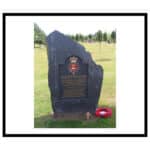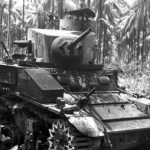The Inter-War Years, 1919-35
It was not until the 21st of February that orders were received which put the future beyond doubt.
All officers, and other ranks who were time-expired or nearing expiration of their engagement, was to return to England, and what was left was to be organized as a 7th Hussar squadron for inclusion in a composite regiment of Hussars (to be formed from 7th, 13th and 14th Hussars) which was being organized temporarily to serve with the Army of Occupation in Mesopotamia.
On 24th March 1919, the 7th Queen’s Own Hussars, now reduced to 12 officers and 96 other ranks, left Baghdad by rail for Kut-el-Amara, where they boarded the river steamer which took them down the Tigris to Basra, the base port. From that point onwards the journey seemed interminable: from Basra across to Bombay, where the party transhipped from H.T Elepanta to s.s. Tahita bound for Liverpool; from Bombay to Suez, where contrary to their original orders the party were dis-embarked from the Tahita and put into a rest camp for two days; then by rail to Port Said, where they stayed for a further eight days, before embarking on H.T. Malwa. Instead of sailing to England as was expected, the Malwa put in at Taranto in Italy. After two days at Taranto, the 7th Hussars boarded a troop train and were jolted, rattled and bumped up the east coast of Italy to Bologna, through the Alps into France, across France to Le Havre and the English Channel. It was a grubby-looking party which on 9th May arrived at the rest camp above Le Havre; nor were they much better when three days later they disembarked at Southampton after a rough and wet channel crossing.
Nobody seemed to be particularly interested to see them, or indeed expecting them. After a period of telephoning and argument, the conclusion came to was that a small cadre should en-train that day for Catterick Camp, a newly organized camp in the wilds of Yorkshire accessible only by a long and slow cross-country journey and that the remainder should go on leave to their homes forthwith.
In 1919, Catterick Camp, then scarcely more than a tract of bleak moorland, was – to troops coming from the sunshine of the East – the last word in desolation and discomfort. Although the month was May, the weather was wet and cold. It was with relief that after five weeks in this wilderness the cadre left it for the Cavalry Barracks in York.
At York, under the command of Lt Col Charles Rankin, reorganization went on apace; by the end of July the Regiment reached the home establishment of three squadrons, and by mid-October, their strength was 27 officers and 435 other ranks. With this achieved, Rankin retired and was replaced by Lt Col HS Sewell, D.S.O., 4th Dragoon Guards.
At this time, a recruiting campaign, carried out by Regimental recruiting parties, brought up the other-rank strength to a total of 618 by the end of March 1920.
At about the time that the Regiment was intended to embark for India, mid-October, the threat of a national coal strike caused the Government to warn all military forces to be ready to act in aid of the Civil Power should that become necessary. Fortunately, the coal strike was settled without disturbance, and on 12th November the Regiment was free to embark at Southampton in H.T. Zepplin for India. They embarked at a strength of 16 officers, 468 other ranks, 36 wives and 37 children, and they left behind them to follow later 1 officer and 64 other ranks for whom there was no room in the overcrowded transport.
Bombay was reached on 6th December and the next day the 7th Hussars were entrained for Mhow, in the Central Provinces, where they arrived in the early morning of the 9th.
India in 1920 seemed – on the surface at least – to be much the same as it had been when the Regiment arrived in 1911, except that there was a forlorn, uncared-for atmosphere about Mhow cantonment. The stables were empty and for the most part bereft of any equipment, but on Christmas Day 618 remounts arrived by train and had to be unboxed and marched to barracks, equipment or no equipment.
By February the situation with regard to horses, saddlery and equipment had improved sufficiently to allow a normal cycle of training to begin and to enable a mounted squadron to be formed for duty with the Mhow Mobile Column. The Indian establishment consisted of a headquarters squadron – which included headquarters, machine-gun troop, signals troop, administrative troop, and band – and three sabre squadrons each containing three sabre troops and one Hotchkiss-gun troop.
Towards the end of the year, in November, the Commander-in-Chief in India, General The Lord Rawlinson inspected the 7th Hussars; afterwards, he told them that he, having seen many cavalry regiments at home and abroad, was able to congratulate all ranks of the Regiment on being the best of those who had come to his notice.
Very shortly after this, they went to Bombay for duties on the arrival of H.R.H. The Price of Wales, whom they met at “The gateway to India” and escorted thence to Government House. Two more days were spent in Bombay in the performance of ceremonial duties, after which ‘B’ and ‘C’ Squadrons moved to Ajmir for escort duty to His Royal Highness, while ‘A’ Squadron was sent to Indore to support the Civil Power against a threat of internal disorder. In all these duties the Regiment earned favourable comments on their smartness and efficiency. Back in Mhow in early February of 1922, they finished the remainder of their time in India and finally left the country having earned a high reputation.
On 12th October 1923, the 7th Hussars disembarked at Southampton from H.T. Assaye, and the next day, on a black and chilly morning, detrained at Edinburgh to take up their quarters at Redford Barracks. It did not take the Regiment long to note that during the time they had been serving overseas a change had come over the military atmosphere at home.
To begin with, at Edinburgh they, like every other regiment on return from India, found themselves very short of trained soldiers, and the first year in their new station was spent mainly in training recruits and remounts, and occasionally doing local ceremonial duties.
The Regiment at Edinburgh was the ‘divisional cavalry regiment’ in the Scottish Command under which cavalry regiments were allocated as either Army Cavalry or Divisional Cavalry. By the time the Regiment had completed their second year at Edinburgh, they were well trained and ready to move to Tidworth to join the 2nd Cavalry Brigade.
At Tidworth, the Regiment took up the duties of Army Cavalry, which differed from those of Divisional Cavalry in degree rather than characteristics. Training went on much the same as before with the exception that now a large and useful training area lay on the very doorstep of barracks.
It was the old familiar routine of peace-time cavalry soldering, but now, in 1926-27, a hint of change was in the air. of late, the cross-country mobility of the modern six-wheeled motor transport vehicle had become greatly improved and the performance of the military motor-lorry was now good enough to enable the lorry to do what hitherto had been considered possible only for the horse-drawn limbered G.S. wagon.
It was despite some shakings of heads and rumblings that “oats and petrol won’t mix” that the decision to equip cavalry with mechanical transport was made, Thus it was that in 1927 the Regiment was organized as regimental headquarters of three groups (signals, specialists and band); Vickers machine-gun squadron of H.Q. and two troops each of four guns, the whole carried in mechanical transport; and two sabre squadrons each of four sabre-troops of four sections, the total peace establishment being 21 officers, 479 all ranks; 277 horses and 14 light six-wheeled motor lorries.
In October 1927, they finished their tour of duty with the 2nd Cavalry Brigade and moved to Colchester to become the Divisional Cavalry regiment of the 4th Infantry Division. After two years training as Divisional Cavalry of the 4th Infantry Division, the Regiment was posted to Aldershot to join the 1st Cavalry Brigade.

7th Hussars, Aldershot 1932
In the 1930s Aldershot was the chief centre of military activity in the United Kingdom. In 1932 the organization of the Regiment was again changed – this time by the addition of a third sabre squadron. This was a change which was all to be good, although it had to be paid for by reducing the number of sabre troops in the squadron from four to three and by substituting a Vickers machine-gun troop of four guns carried on pack horses for a squadron of eight guns carried on lorries.
The Regiment had three good years at Aldershot and it was not without regret that they left the 1st Cavalry Brigade at the end of 1933 and moved to the single-regiment station at Hounslow to do two years’ “fattening-up” before going to Egypt, where they had been warned was to be their fate in 1935.
At Hounslow, Regimental history to some extent repeated itself. As they had done in 1910-11, so the Regiment did in 1934-35, that is, they trained recruits, and played their part in Royal ceremonies.
The Regiment, now commanded by Lt Col N.E. Weatherall, O.B.E., embarked at Southampton on H.T. Nevassa on 18th September 1935 at a strength of 23 officers, 539 all ranks and 386 horses.
Scarcely more than a year after the Regiment arrived in Egypt, an entry was made in the Regimental Record of Service:
“The conversation of the Regiment to a Cavalry Light Tank Regiment took place in January 1937. All horses except five for training young officers were returned to the Remount Depot, Abbassia.”


